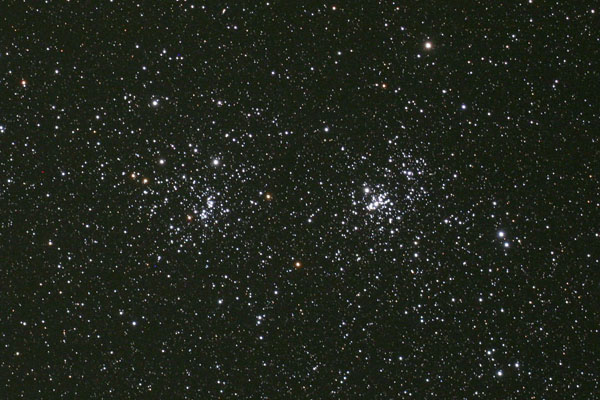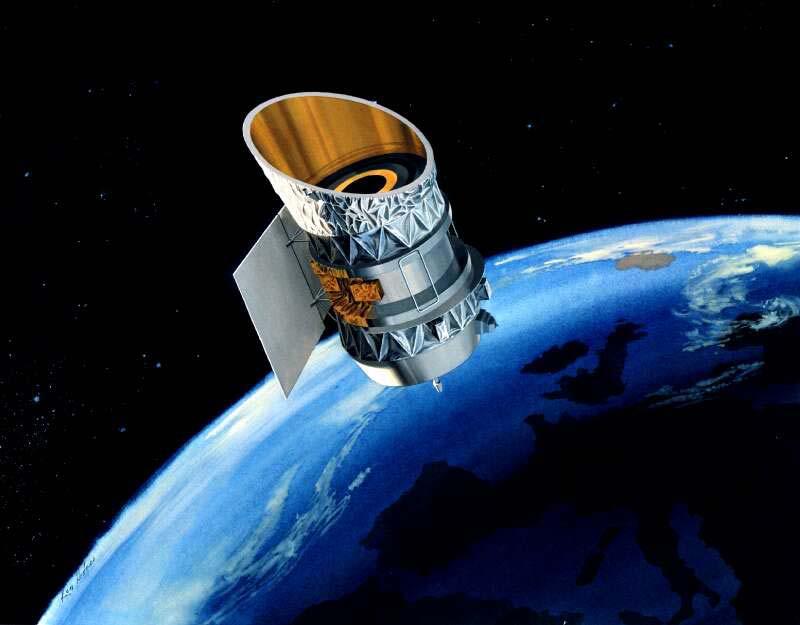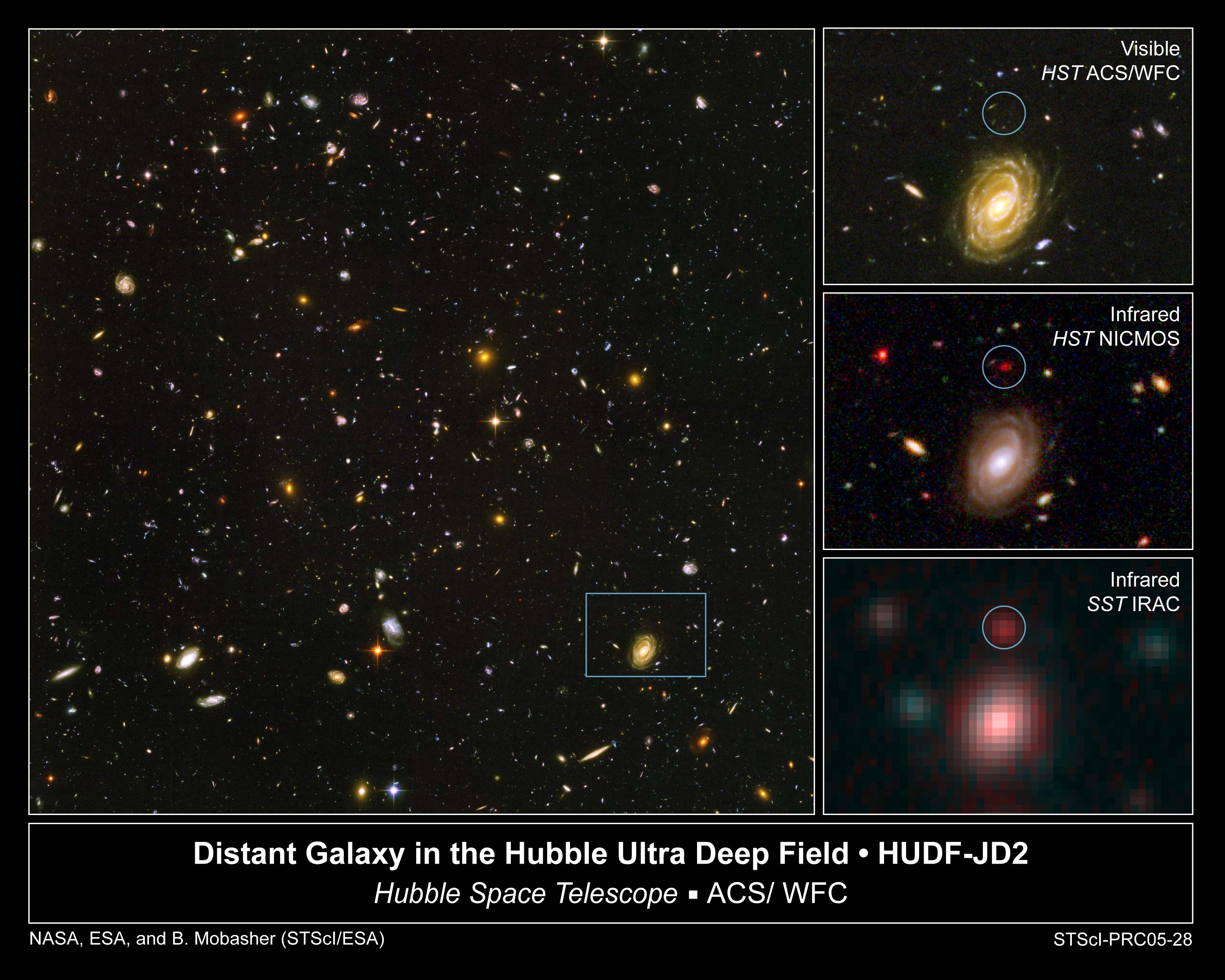|
Perseus Molecular Cloud
The Perseus molecular cloud (Per MCld) is a nearby (~1000 ly) giant molecular cloud in the constellation of Perseus and contains over 10,000 solar masses of gas and dust covering an area of 6 by 2 degrees. Unlike the Orion molecular cloud it is almost invisible apart from two clusters, IC 348 and NGC 1333, where low-mass stars are formed. It is very bright at mid and far-infrared wavelengths and in the submillimeter originating in dust heated by the newly formed low-mass stars. It shows a curious ring structure in maps made by the IRAS and MSX satellites and the Spitzer Space Telescope The Spitzer Space Telescope, formerly the Space Infrared Telescope Facility (SIRTF), was an infrared space telescope launched in 2003, that was deactivated when operations ended on 30 January 2020. Spitzer was the third space telescope dedicate ... and has been detected by the COSMOSOMAS at microwave frequencies as a source of anomalous " spinning dust" emission. References * * *More on '' ... [...More Info...] [...Related Items...] OR: [Wikipedia] [Google] [Baidu] |
J2000
In astronomy, an epoch or reference epoch is a moment in time used as a reference point for some time-varying astronomical quantity. It is useful for the celestial coordinates or orbital elements of a celestial body, as they are subject to perturbations and vary with time. These time-varying astronomical quantities might include, for example, the mean longitude or mean anomaly of a body, the node of its orbit relative to a reference plane, the direction of the apogee or aphelion of its orbit, or the size of the major axis of its orbit. The main use of astronomical quantities specified in this way is to calculate other relevant parameters of motion, in order to predict future positions and velocities. The applied tools of the disciplines of celestial mechanics or its subfield orbital mechanics (for predicting orbital paths and positions for bodies in motion under the gravitational effects of other bodies) can be used to generate an ephemeris, a table of values giving ... [...More Info...] [...Related Items...] OR: [Wikipedia] [Google] [Baidu] |
Perseus (constellation)
Perseus is a constellation in the Northern celestial hemisphere, northern sky, named after the Greek mythology, Greek mythological hero Perseus. It is one of the 48 ancient constellations listed by the 2nd-century astronomer Ptolemy, and among the IAU designated constellations, 88 modern constellations defined by the International Astronomical Union (IAU). It is located near several other constellations named after ancient Greek legends surrounding Perseus, including Andromeda (constellation), Andromeda to the west and Cassiopeia (constellation), Cassiopeia to the north. Perseus is also bordered by Aries (constellation), Aries and Taurus (constellation), Taurus to the south, Auriga (constellation), Auriga to the east, Camelopardalis to the north, and Triangulum to the west. Some Celestial cartography, star atlases during the early 19th century also depicted Perseus holding the disembodied head of Medusa, whose Asterism (astronomy), asterism was named together as ''Perseus et Capu ... [...More Info...] [...Related Items...] OR: [Wikipedia] [Google] [Baidu] |
Molecular Cloud
A molecular cloud—sometimes called a stellar nursery if star formation is occurring within—is a type of interstellar cloud of which the density and size permit absorption nebulae, the formation of molecules (most commonly molecular hydrogen, H2), and the formation of H II regions. This is in contrast to other areas of the interstellar medium that contain predominantly ionized gas. Molecular hydrogen is difficult to detect by infrared and radio observations, so the molecule most often used to determine the presence of H2 is carbon monoxide (CO). The ratio between CO luminosity and H2 mass is thought to be constant, although there are reasons to doubt this assumption in observations of some other galaxies. Within molecular clouds are regions with higher density, where much dust and many gas cores reside, called clumps. These clumps are the beginning of star formation if gravitational forces are sufficient to cause the dust and gas to collapse. Research and discovery The histo ... [...More Info...] [...Related Items...] OR: [Wikipedia] [Google] [Baidu] |
Constellation
A constellation is an area on the celestial sphere in which a group of visible stars forms Asterism (astronomy), a perceived pattern or outline, typically representing an animal, mythological subject, or inanimate object. The first constellations were likely defined in prehistory. People used them to relate stories of their beliefs, experiences, creation myth, creation, and mythology. Different cultures and countries invented their own constellations, some of which lasted into the early 20th century before today's constellations were internationally recognized. The recognition of constellations has changed significantly over time. Many changed in size or shape. Some became popular, only to drop into obscurity. Some were limited to a single culture or nation. Naming constellations also helped astronomers and navigators identify stars more easily. Twelve (or thirteen) ancient constellations belong to the zodiac (straddling the ecliptic, which the Sun, Moon, and planets all traver ... [...More Info...] [...Related Items...] OR: [Wikipedia] [Google] [Baidu] |
Orion Molecular Cloud
The Orion Molecular Clouds (OMC) form collectively a filament cloud and are star-forming regions located behind the Orion Nebula and are seen as dark clouds between the Orion Nebula and Sh 2-279. The filament is part of the molecular cloud Orion A, which is part of the Orion molecular cloud complex. The Orion Molecular Clouds are divided into four parts: OMC-1, OMC-2, OMC-3 and OMC-4. Material in the OMCs and material in the foreground from the Orion Nebula prevent observations in shorter wavelengths and therefore the OMC is often observed with radio telescopes and with infrared telescopes. Orion Molecular Cloud 1 The OMC-1 is located behind the Orion Nebula. Most notable the OMC-1 contains the Kleinmann-Low nebula (KL nebula) in its center. While the KL nebula and the protostars in the core of OMC-1 are located only 90 arcseconds from the Trapezium cluster, the OMC-1 is actually a few tenths of a parsec behind the Trapezium cluster. The material of the OMC-1 shields the pro ... [...More Info...] [...Related Items...] OR: [Wikipedia] [Google] [Baidu] |
IC 348
IC 348 is a star formation, star-forming region in the constellation Perseus (constellation), Perseus located about 1,000 light years from the Sun. It consists of nebulosity and an associated 2-million-year-old cluster of roughly 400 stars within an angular diameter of 20. The most massive stars in the cluster are the binary star system BD+31°643, which has a combined spectral class of B5. Based upon infrared observations using the Spitzer Space Telescope, about half of the stars in the cluster have a Circumstellar disc, circumstellar disk, of which 60% are thick or primordial disks. Brown dwarfs The relatively young age of the IC 348 star cluster has facilitated the discovery of three low-mass brown dwarfs. As these objects cool over time, they become more detectable, particularly in their youth. Recent observations conducted in 2023 by the James Webb Space Telescope have confirmed these findings, identifying them as the smallest free-floating brown dwarfs on record, with the ... [...More Info...] [...Related Items...] OR: [Wikipedia] [Google] [Baidu] |
NGC 1333
NGC 1333 is a reflection nebula located in the northern constellation Perseus, positioned next to the southern constellation border with Taurus and Aries. It was first discovered by German astronomer Eduard Schönfeld in 1855. The nebula is visible as a hazy patch in a small telescope, while a larger aperture will show a pair of dark nebulae designated Barnard 1 and Barnard 2. It is associated with a dark cloud L1450 (Barnard 205). Estimates of the distance to this nebula range from . This nebula is in the western part of the Perseus molecular cloud and is a young region of very active star formation, being one of the best-studied objects of its type. It contains a fairly typical hierarchy of star clusters that are still embedded in the molecular cloud in which they formed, which are split into two main sub-groups to the north and south. Most of the infrared emission is happening in the southern part of the nebula. A significant portion of the stars seen in the infrared are in th ... [...More Info...] [...Related Items...] OR: [Wikipedia] [Google] [Baidu] |
IRAS
The Infrared Astronomical Satellite (Dutch language, Dutch: ''Infrarood Astronomische Satelliet'') (IRAS) was the first space telescope to perform a astronomical survey, survey of the entire night sky at infrared wavelengths. Launched on 25 January 1983, its mission lasted ten months. The telescope was a joint project of the United States (NASA), the Netherlands (Netherlands Agency for Aerospace Programmes, NIVR), and the United Kingdom (Science and Engineering Research Council, SERC). Over 250,000 infrared sources were observed at 12, 25, 60, and 100 micrometer wavelengths. Support for the processing and analysis of data from IRAS was contributed from the Infrared Processing and Analysis Center at the California Institute of Technology. Currently, the Infrared Science Archive at IPAC holds the IRAS archive. The success of IRAS led to interest in the 1985 STS-51-F, Infrared Telescope (IRT) mission on the Space Shuttle, and the planned Shuttle Infrared Telescope Facility whi ... [...More Info...] [...Related Items...] OR: [Wikipedia] [Google] [Baidu] |
Spitzer Space Telescope
The Spitzer Space Telescope, formerly the Space Infrared Telescope Facility (SIRTF), was an infrared space telescope launched in 2003, that was deactivated when operations ended on 30 January 2020. Spitzer was the third space telescope dedicated to infrared astronomy, following IRAS (1983) and ISO (1995–1998). It was the first spacecraft to use an Earth-trailing orbit, later used by the Kepler planet-finder. The planned mission period was to be 2.5 years with a pre-launch expectation that the mission could extend to five or slightly more years until the onboard liquid helium supply was exhausted. This occurred on 15 May 2009. Without liquid helium to cool the telescope to the very low temperatures needed to operate, most of the instruments were no longer usable. However, the two shortest-wavelength modules of the IRAC camera continued to operate with the same sensitivity as before the helium was exhausted, and continued to be used into early 2020 in the Spitzer Warm Mission ... [...More Info...] [...Related Items...] OR: [Wikipedia] [Google] [Baidu] |
COSMOSOMAS
COSMOSOMAS is a circular scanning astronomical microwave experiment to investigate the Cosmic Microwave Background anisotropy and diffuse emission from the Galaxy on angular scales from 1 to 5 degrees. It was designed and built by the Instituto de Astrofísica de Canarias (IAC) in Tenerife, Spain, in 1998. Its name comes from "COSMOlogical Structures On Medium Angular Scales" referring to CMB fluctuations. This experiment grew out experience of the previous Tenerife Experiment with the need to go to smaller angular scales with greater sensitivity. The experiment consists of two instruments, COSMO15 (three channels at 12.7, 14.7 and 16.3 GHz) and COSMO11 (two hands of linear polarization at 10.9 GHz). Both instruments are based on a circular scanning sky strategy, consisting of a 60 rpm spinning flat mirror directing the sky radiation into an off-axis paraboloidal antenna, whose size is 1.8-m in the COSMO15 and 2.4-m in the COSMO11. These antennas focus the radiation on to ... [...More Info...] [...Related Items...] OR: [Wikipedia] [Google] [Baidu] |
Spinning Dust
In astronomy, spinning dust emission is a mechanism proposed to explain anomalous microwave emission from the Milky Way. The emission could arise from the electric dipole of very rapidly spinning (10–60 GHz) extremely small (nanometer) dust grains as suggested by Bruce T. Draine and Alex Lazarian in 1998, most likely polycyclic aromatic hydrocarbons. The anomalous emission was first discovered as a by-product of Cosmic Microwave Background observations which make very sensitive measurements of the microwave sky which have to identify and remove contamination from the galaxy. The smallest dust grains are thought to have only hundreds of atoms. History Anomalous microwave emission was first seen as a surprising statistical correlation of microwave sky variations with far infrared (FIR) emission (Kogut et al. 1996, Leitch et al. 1997). This signal traced the warm galactic dust emission which was unexpected as the extrapolated infrared dust signal to microwave frequencies sho ... [...More Info...] [...Related Items...] OR: [Wikipedia] [Google] [Baidu] |
Molecular Clouds
A molecular cloud—sometimes called a stellar nursery if star formation is occurring within—is a type of interstellar cloud of which the density and size permit absorption nebulae, the formation of molecules (most commonly molecular hydrogen, H2), and the formation of H II regions. This is in contrast to other areas of the interstellar medium that contain predominantly ionized gas. Molecular hydrogen is difficult to detect by infrared and radio observations, so the molecule most often used to determine the presence of H2 is carbon monoxide (CO). The ratio between CO luminosity and H2 mass is thought to be constant, although there are reasons to doubt this assumption in observations of some other galaxies. Within molecular clouds are regions with higher density, where much dust and many gas cores reside, called clumps. These clumps are the beginning of star formation if gravitational forces are sufficient to cause the dust and gas to collapse. Research and discovery The histo ... [...More Info...] [...Related Items...] OR: [Wikipedia] [Google] [Baidu] |





